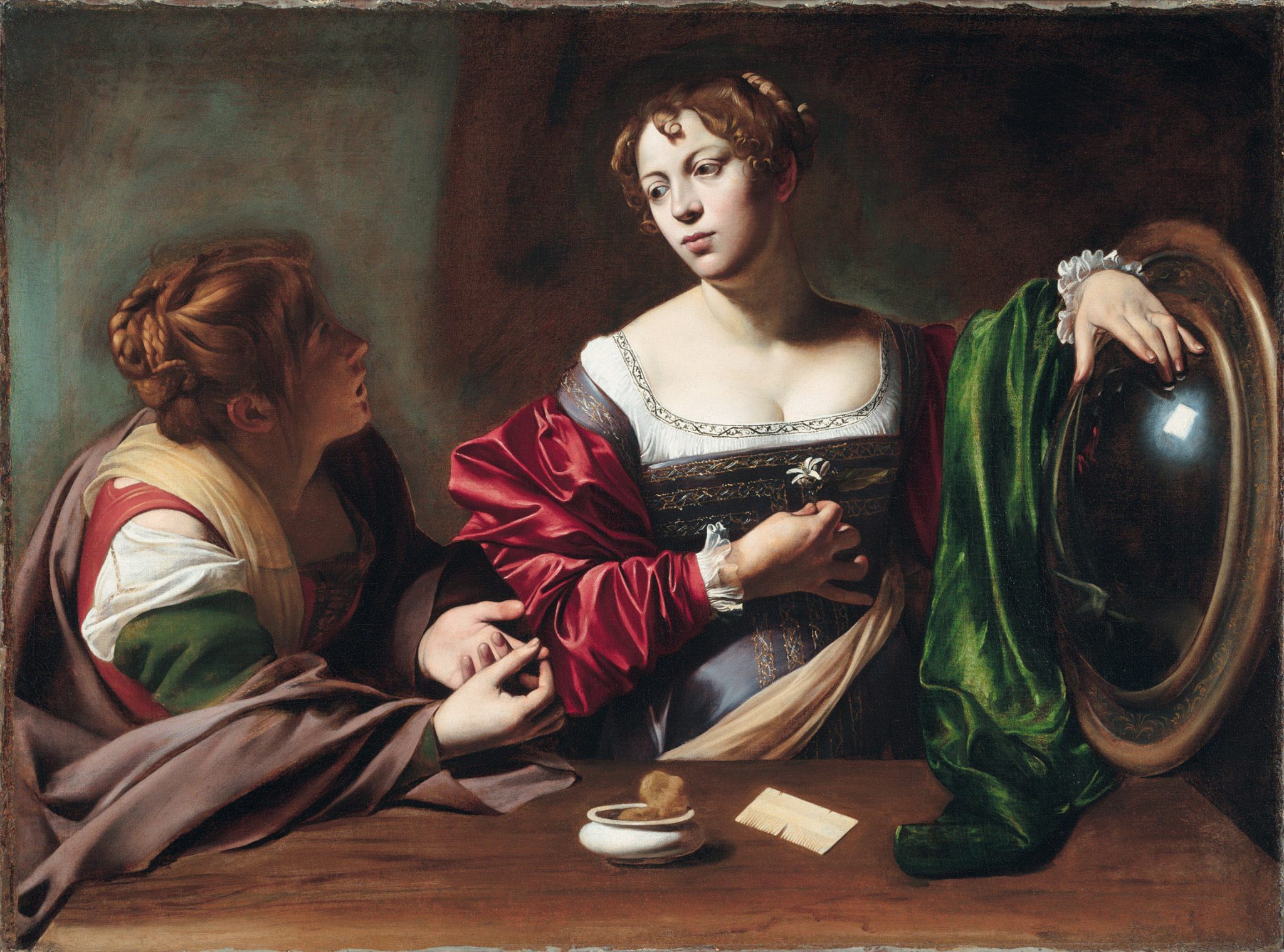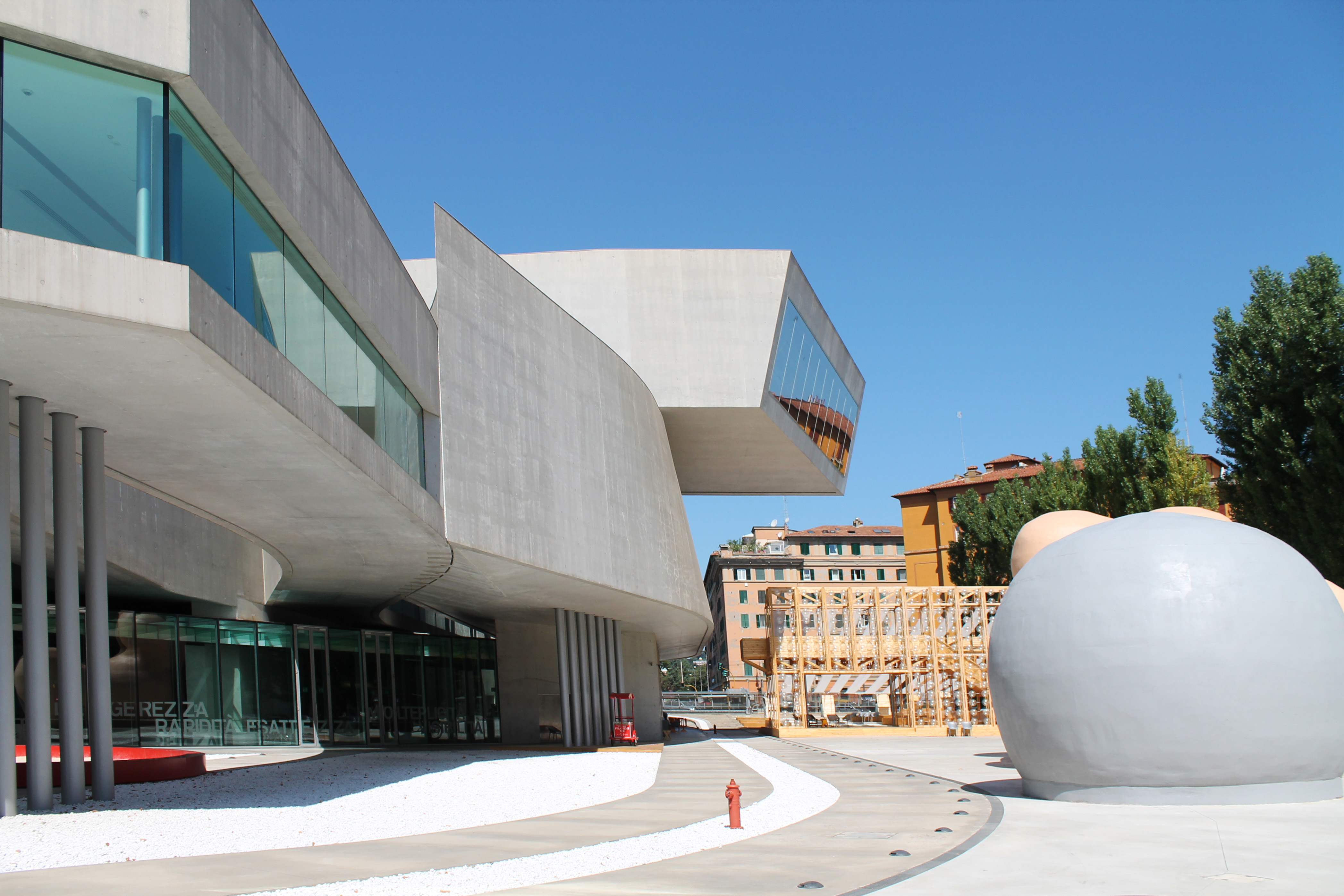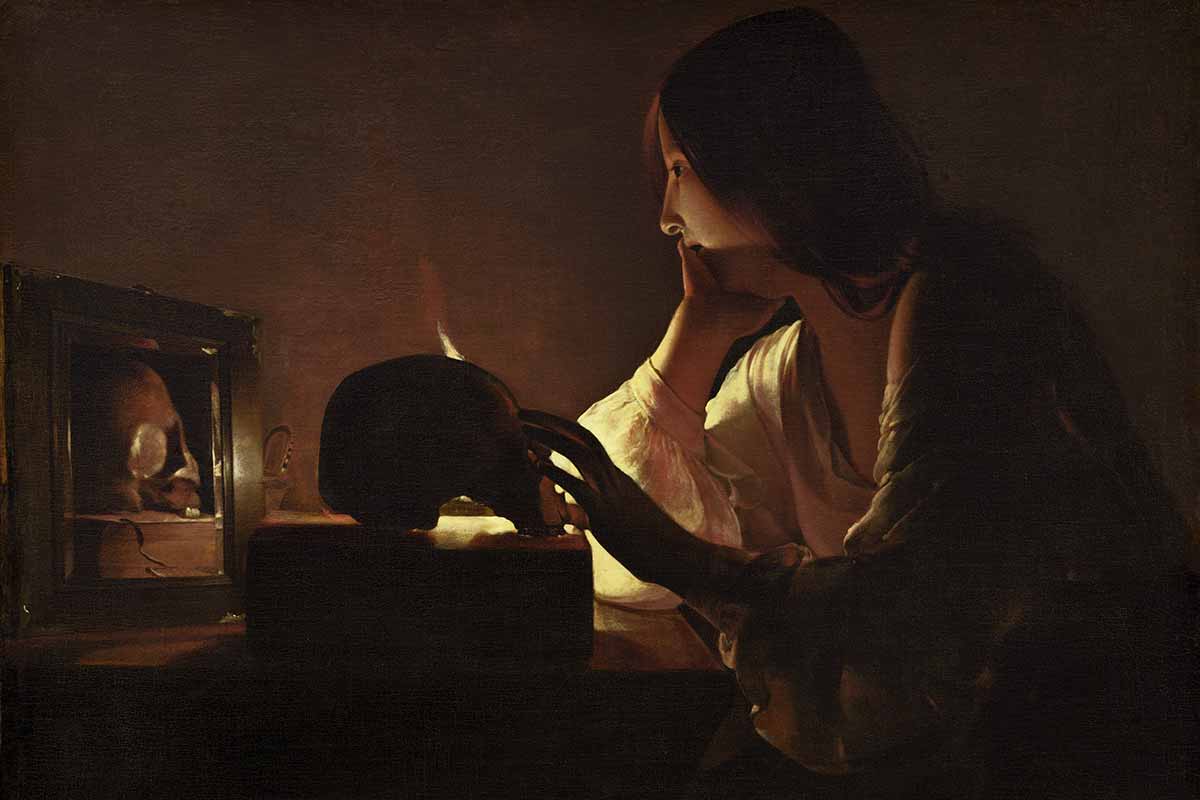
La Maddalena del Caravaggio il peccato incontra la Grazia » Scuola
Donatello, Santa Maria Maddalena penitente, 1450-55 ca., Museo dell'Opera del Duomo. There are still questions surrounding the sculpture. Undoubtedly it is one of the most intimate of the artist but scholars still do not agree on the date of realization or the place for which it was intended.

La Maddalena tra Caravaggio e Canova, la mostra Intesa Sanpaolo
The Penitent Magdalene Domenico Tintoretto (Domenico Robusti, Venice 1560 - 1635) Painting The hall III Hall - Venice and Its Territory: the Sixteenth Century In this location, paintings from Venice, one of the major centers of the Italian Renaissance, where some of the greatest Italian artists of all time lived, are gathered.

Maria Maddalena penitente, par Scipione Pulzone da Gaeta Renaissance
Penitent Magdalene (also called Repentant Madalene) is a 16th-century oil on canvas painting by Italian Baroque painter Caravaggio. The painting portrays a repentant Mary Magdalene, bowed over in penitent sorrow as she leaves behind her dissolute life, its trappings abandoned beside her.

Caravaggio e la sua Maddalena Penitente Artepiù
Maddalena Penitente (Penitent Magdalene) Maddalena Penitente is a painting by Caravaggio dating from 1594-95 and now houses in stunning Doria Pamphili Gallery. With this canvas, Caravaggio represents Magdalene sitting on a small chair, crying, in a bare room with small objects typical of her iconographies, such as pearls and oil.

Caravaggio genio pentito. Prorogata la mostra milanese a Palazzo Reale
Email: [email protected] / Phone: +44 7429 011000 Mary Magdalen is a controversial figure even today, and this has not changed since Caravaggio's time. His Penitent Mary Magdalene (also known as Repentant Magdalene) is a powerful statement - but what, precisely, that statement is, is unknown.

Nell'ultima Maddalena i dolori di Caravaggio ilGiornale.it
Maddalena Penitente: la strada del Caravaggio Fateci caso. La Maddalena ha tipicamente lo sguardo ispirato rivolto verso il cielo, in cerca del perdono divino. Oppure, comunque, verso chi guardi l'opera. Ciò è vero anche per famosi pennelli caravaggeschi quali Giordano e De Ribera. Il Merisi no: ancora una volta trova la sua strada.

Maddalena Penitente di Caravaggio Descrizione dell'opera e mostre in
Download hi-res image TITLE Penitent St. Mary Magdalen. AUTHOR Giampietrino (Gian Pietro Rizzoli) DATE c. 1520. OBJECT TYPE AND MATERIAL Oil on panel. DIMENSIONS cm 50 x 60. INVENTORY 454. ROOM XII. Work on display. Giampietrino was one of the longest-lived perpetuators of Leonardo's tradition.

La Maddalena penitente di de La Tour Schola Palatina
The restoration of the Maddalena Penitente becomes the reason for deepening the personal and artistic ties between Michelangelo Merisi da Caravaggio and Artemisia Gentileschi, much closer than has been assumed to date. The work was most likely painted in Florence during the artist's stay at the Medici court, which lends it a special significance in bringing it to Palazzo Vecchio before.

Maria Maddalena in estasi 1606, olio su tela 106,5 × 91 cm, collezione
La Maddalena di Caravaggio, infatti, non è una "santa", ma una "peccatrice" che divenne santa, perché seppe pentirsi ed ebbe fede: e in ciò possiamo cogliere una provocatoria volontà di riportare il sacro a misura d'uomo.

Maddalena penitente di Caravaggio analisi
The painting dates back to Caravaggio's first Roman activity (1597) and depicts the Sinner who has just renounced her past worldly life, abandoning a string of pearls and jewels on the ground together with the jar of ointment, her characteristic attribute. Michelangelo Merisi, detto Caravaggio Five hundred turned_in_not Save

The Magdalene with the Smoking Flame Baroque painting, La tour, Mary
Penitent Mary Magdalene, 1597 by Caravaggio. Penitent Mary Magdalene is different from Caravaggio's other youthful works in its suppression of most highlights, particularly on the flesh and the drapery. Past restoration may have reduced the highlights somewhat, but the general effect is of an intentional utilization of softer light, modified by atmosphere.

La conversione della Maddalena di Caravaggio analisi
The Repentant Magdalene, also called The Conversion of Mary Magdalene, is an oil painting of the early 1660s by the Baroque Italian painter Guido Cagnacci.It shows Mary Magdalene, beside her remonstrating sister Martha, at the moment she repents, echoed by an allegorical pairing of Virtue, an angel, chasing out Vice, a devil.The painting forms part of the collection of the Norton Simon Museum.

Penitent Mary Magdalene, 1597 by Caravaggio
La Maddalena penitente è un dipinto eseguito da Caravaggio attorno al 1594 - 1595 e conservato nella Galleria Doria Pamphilj di Roma . Indice 1 Storia 1.1 La committenza 1.2 La modella 2 Descrizione e stile 3 Note 4 Bibliografia 5 Altri progetti 6 Collegamenti esterni Storia La committenza

Maddalena penitente di Caravaggio analisi
The model was a famous young courtesan, Anna (Annuccia) Bianchini, of Tuscan origins and well known in Rome. Caravaggio certainly met her in the Campo Marzio area, the so-called "Ortacci", a place of taverns and prostitution. The two intertwined a relationship that lasted over time and was quite turbulent.

La Magdalena penitente (1665) Luca Giordano Pintura del barroco
Storia e descrizione della Maddalena penitente, un quadro dipinto da Caravaggio nel 1594-1595 e conservata attualmente alla Galleria Doria Pamphilj, Roma.

Chez Namaste Nancy Yesterday was the Feast Day of Mary of Magdala
Penitent Magdalene (also called Repentant Madalene) is a 16th-century oil on canvas painting by Italian Baroque painter Caravaggio. The painting portrays a repentant Mary Magdalene, bowed over in penitent sorrow as she leaves behind her dissolute life, its trappings abandoned beside her. [1]